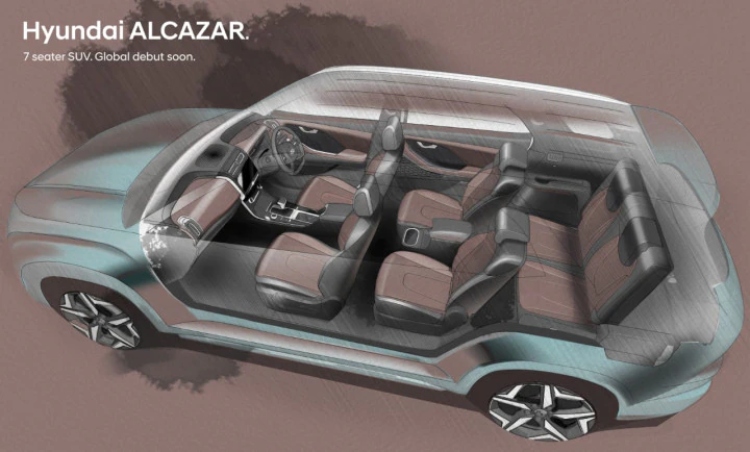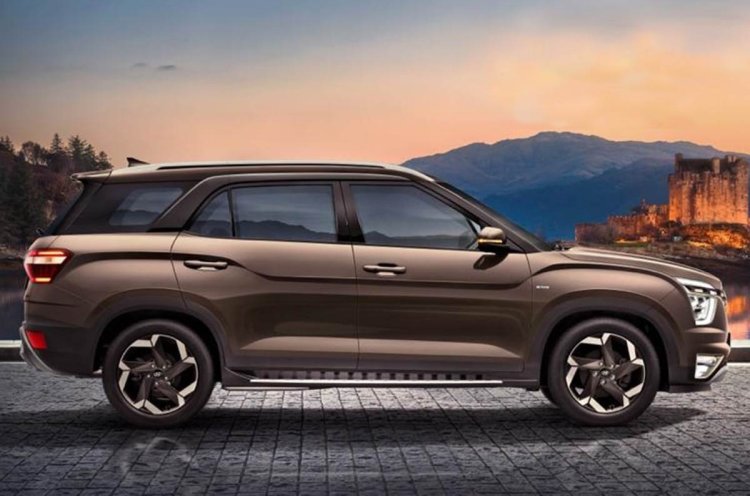Hyundai debuted the all-new Alcazar seven-seater SUV in pre-production prototype form in India earlier this month. The Hyundai Alcazar is essentially a 7-seater version of the Creta and it is the brand's first three-row SUV in a really long time. The carmaker was all set to fully unveil the SUV later this month, with the price announcement following shortly thereafter. However, Hyundai has now had to postpone the launch of the Alcazar in India, possibly to late May 2021. This move has been made in light of the recent surge in COVID-19 cases across India.

The production-spec Alcazar actually has a lot in common with the Creta. Some of the body panels like the front fenders, bonnet and even all four doors are identical to that of the Creta. The most significant changes only come after the C-Pillar. Up front, the Alcazar gets a unique grille design with a diamond-studded pattern. The front bumper design too has been slightly updated. Towards the rear, it gets a distinct rear quarter glass area and Hyundai has even managed well to retain the 'lightning arc' element of the Creta. It also seems a little more proportionate, thanks to the longer rear overhang. The sloping roofline is now gone and the tail gate is much more upright than before. It gets brand new wrap-around tail lamps and a re-profiled rear bumper with faux dual exhaust tips.
Also Read : Hyundai Creta vs Hyundai Alcazar - Which One Makes More Sense?
Although Hyundai has not yet officially revealed the interior dashboard design of the Alcazar, from design sketches previewed previously, we know it will be mostly similar to the Creta. Hyundai have, however, revealed details about its seating configuration and that is really its main talking point. The Alcazar will be offered in both 6- and 7-seater configurations. In the 6-seater variant, the Alcazar comes with captain chairs for the middle row with an unique fixed floor-mounted arm rest with cupholders and extra storage space in the middle. In the 7-seater variant, it gets a bench seat in the middle row. The seats also have a sliding function to adjust space in the third row. The third row of seats gets its own reclining function, individual AC vents and can also be folded flat for an increased boot space.

Under the hood, the Hyundai Alcazar gets the option of two engines - a 2.0L petrol and the 1.5L diesel engine. The 2.0-litre, four-cylinder petrol engine has been tuned to produce 159PS and 192Nm of peak torque. This is the same engine that also does duty on the Hyundai Elantra and Tucson. Hyundai says the Alcazar petrol can sprint from 0-100 kph in less than 10 seconds. The tried-and-tested 1.5L diesel engine has been carried over from the Creta and produces the same 115PS and 250Nm of torque. This diesel engine has been recalibrated for the bigger and heavier 7-seater SUV. Both engines come mated to either a 6-speed manual or a 6-speed automatic gearbox.

As already mentioned, the Alcazar is based on the same platform as the Creta. However, Hyundai have reworked the platform to give it a longer wheelbase of 2,760 mm, which is 150mm more than the Creta. This has obviously been done to open up more space for the third row of seats. Prices of the Alcazar are expected to range between INR 12.80 lakh to INR 20.00 lakh (ex-showroom). That means a Creta equivalent variant of the Alcazar is expected to cost about INR 2-3 lakh more. Upon arrival, it will take on the likes of the Tata Safari, the MG Hector Plus and also the upcoming Mahindra XUV700.
Stay tuned to IndianAutosBlog.com for more Hyundai updates and other four-wheeler news.
























